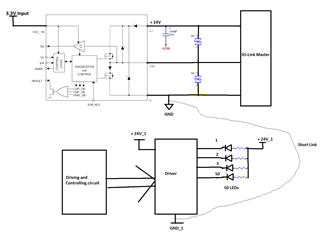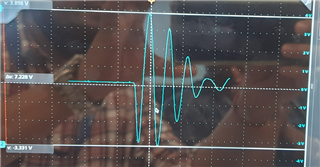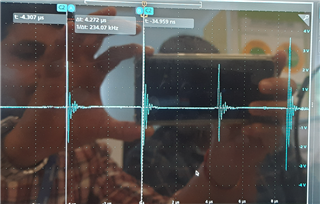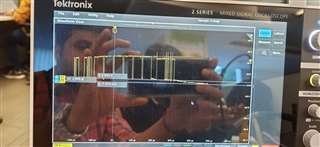Hello,
I am using TIOL111 (without an internal LDO) part in my design. 3.3V Input for TIOL chip is generated externally by DC/DC buck converter IC (LMR14010) with input +24V.
Application : I am driving 50 numbers of LEDs with the help of IO-Link Master. [Please refer below picture for reference]
IO-link master sends command to TIOL chip -> the TIOL chip is interfaced with the "Driving and controlling circuit" block -> Driver makes required LEDs ON or OFF.
TIOL chip's "GND" and Driver IC's "GND_1" are shorted with "short Link".

Issue 1 -> In above scenario, When IO-link communication between Master and TIOL chip is made ON, i am seeing fluctuations on GND and GND_1 lines. [Peak to peak around 7V]

Occurrence of such fluctuations are typically after 4.2usec (around 230.4 kHz which is baud rate set for IO-link communication in my design)

When IO-link communication is stopped, the above fluctuations are gone (peak to peak voltage reduced to mV)
Issue 2 -> When I make all the 50 LEDs ON and OFF by 1 sec, I am seeing My DC-DC output swing from 3.212V to 3.479V. i.e. when all 50 LEDs are ON, DC/DC output is 3.479V and when they are OFF, output drops to 3.212V. When less number of LEDs are ON (say 4 or 5) or If LED's are ON in scrolling fashion (1 LED is ON at a given time), This swing in DC/DC supply output is not observed.
Question is -> What could be the reason of above 2 issues ? Any idea to resolve such issues ?
Regards,
Prasad



